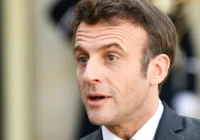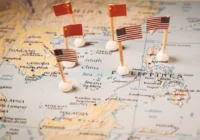Nepal’s Prime Minister Pushpa Kamal “Prachanda” Dahal is set to embark on a crucial visit to China at the end of September. He will meet China’s President Xi Jinping during the four-day trip. This is a strategic move in a world where connectivity and cooperation are increasingly indispensable. Nepal’s diplomatic endeavors offer a glimpse into the nation’s evolving role.
Nepal is a landlocked nation. It depends on oil imports, the vast bulk of which comes from India. At the same time, its high mountains and swift rivers make it a potential hydroelectric powerhouse. So, energy is a key foreign relations priority. With global supply chains disturbed by recent events such as the war in Ukraine, Nepal will have to maintain good relations with both of its large neighbors, China and India.
Nepal between two economic powers
Prachanda’s visit to India in June deepened the two nations’ energy relationship. India is a big energy customer, and this means it has a lot of influence on Nepal’s energy industry. India’s Prime Minister Narendra Modi broadcasted this influence by proclaiming a strategic blueprint to augment power imports from Nepal to India. He set the formidable target of 10,000 megawatt-hours over the next decade. That number had previously been only 450 megawatt-hours.
Energy is just part of the story. India is far and away Nepal’s largest economic partner. India buys 80% of Nepal’s exports and provides 61% of its imports. And the trade relationship between the neighbors is growing fast.
By contrast, China provides 15% of Nepal’s imports, and exports from Nepal to China amounted to $5.39 million in 2022. China has increased its involvement in the Nepali economy in recent years, serving as a key investor in Nepal’s infrastructure development. China has pledged Nepal access to some of its ports so that the landlocked country will no longer have to rely on others to conduct global trade. Additionally, both nations embarked on an ambitious project to establish a trans-Himalayan railway network linking Kathmandu with Tibet.
For Nepal, the challenge will be to avoid taking sides and instead to promote a multilateral solution that will benefit all parties involved.
What is in store for Nepal and China?
Prachanda’s visit signifies not only bilateral cooperation but also Nepal’s aspiration to become a regional energy hub. Nepal and Bangladesh have just made an energy export agreement, and Prachanda will likely negotiate an export agreement with China as well during this visit. China is the world’s largest manufacturer, and that industry consumes a gargantuan amount of electricity. Nepal is an obvious choice as a partner for China.
With its eyes set on bolstering national dignity, unity, and mutual interests, Nepal forges ahead with a clear understanding of its foreign policy goals: regional balance, multilateral solutions and sustainable development.
Cooperation, not competition
In a world that continuously experiences shifts in alliances and geopolitical currents, it is important to respect each country’s sovereign right to engage with others based on its distinct circumstances. Such engagements should be appreciated as means of fostering bilateral ties, cultural exchanges and economic collaborations, without hastily attributing them to grander geopolitical designs.
In conclusion, while the international community may observe these diplomatic interactions with inquisitiveness, it’s prudent not to overinterpret their significance. Nepal, like every nation, has its own unique priorities to pursue, but it seeks to do so in a way that is beneficial for everyone in the region. By doing so, Nepal can promote prosperity while defusing, rather than adding to, regional disputes and tensions.
[Throvnica Chandru and Anton Schauble edited this piece.]
The views expressed in this article are the author’s own and do not necessarily reflect Fair Observer’s editorial policy.
Support Fair Observer
We rely on your support for our independence, diversity and quality.
For more than 10 years, Fair Observer has been free, fair and independent. No billionaire owns us, no advertisers control us. We are a reader-supported nonprofit. Unlike many other publications, we keep our content free for readers regardless of where they live or whether they can afford to pay. We have no paywalls and no ads.
In the post-truth era of fake news, echo chambers and filter bubbles, we publish a plurality of perspectives from around the world. Anyone can publish with us, but everyone goes through a rigorous editorial process. So, you get fact-checked, well-reasoned content instead of noise.
We publish 2,500+ voices from 90+ countries. We also conduct education and training programs
on subjects ranging from digital media and journalism to writing and critical thinking. This
doesn’t come cheap. Servers, editors, trainers and web developers cost
money.
Please consider supporting us on a regular basis as a recurring donor or a
sustaining member.
Will you support FO’s journalism?
We rely on your support for our independence, diversity and quality.







Comment